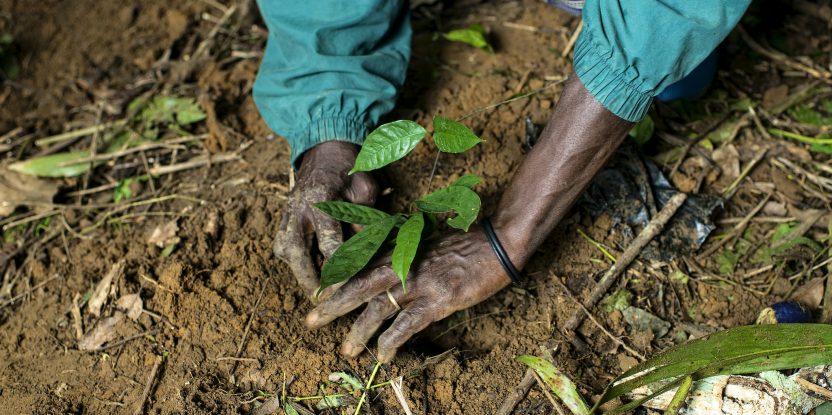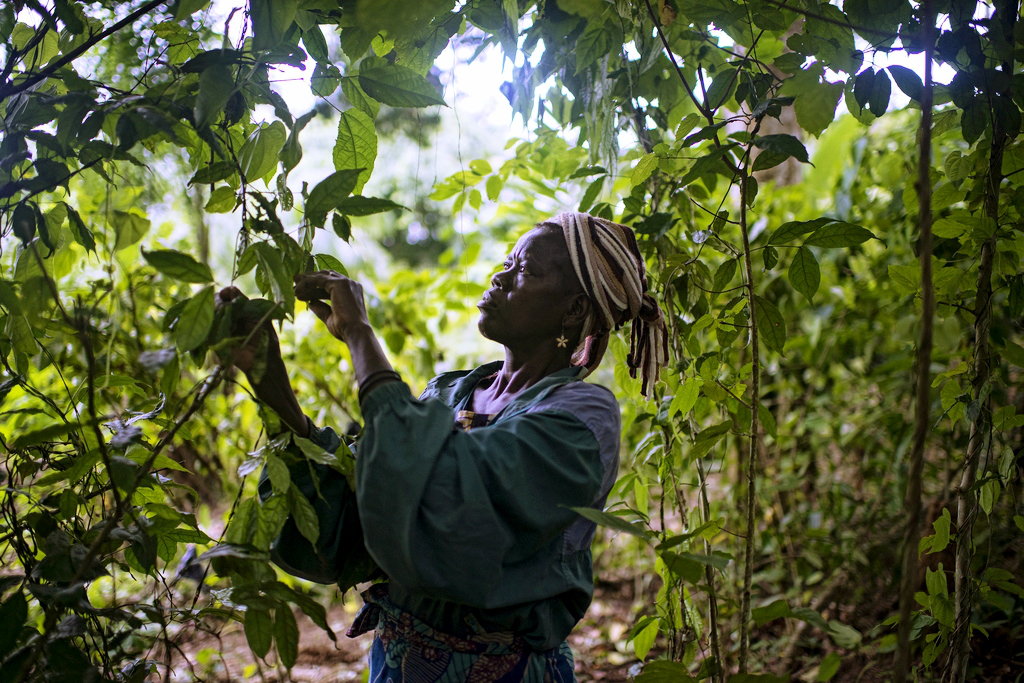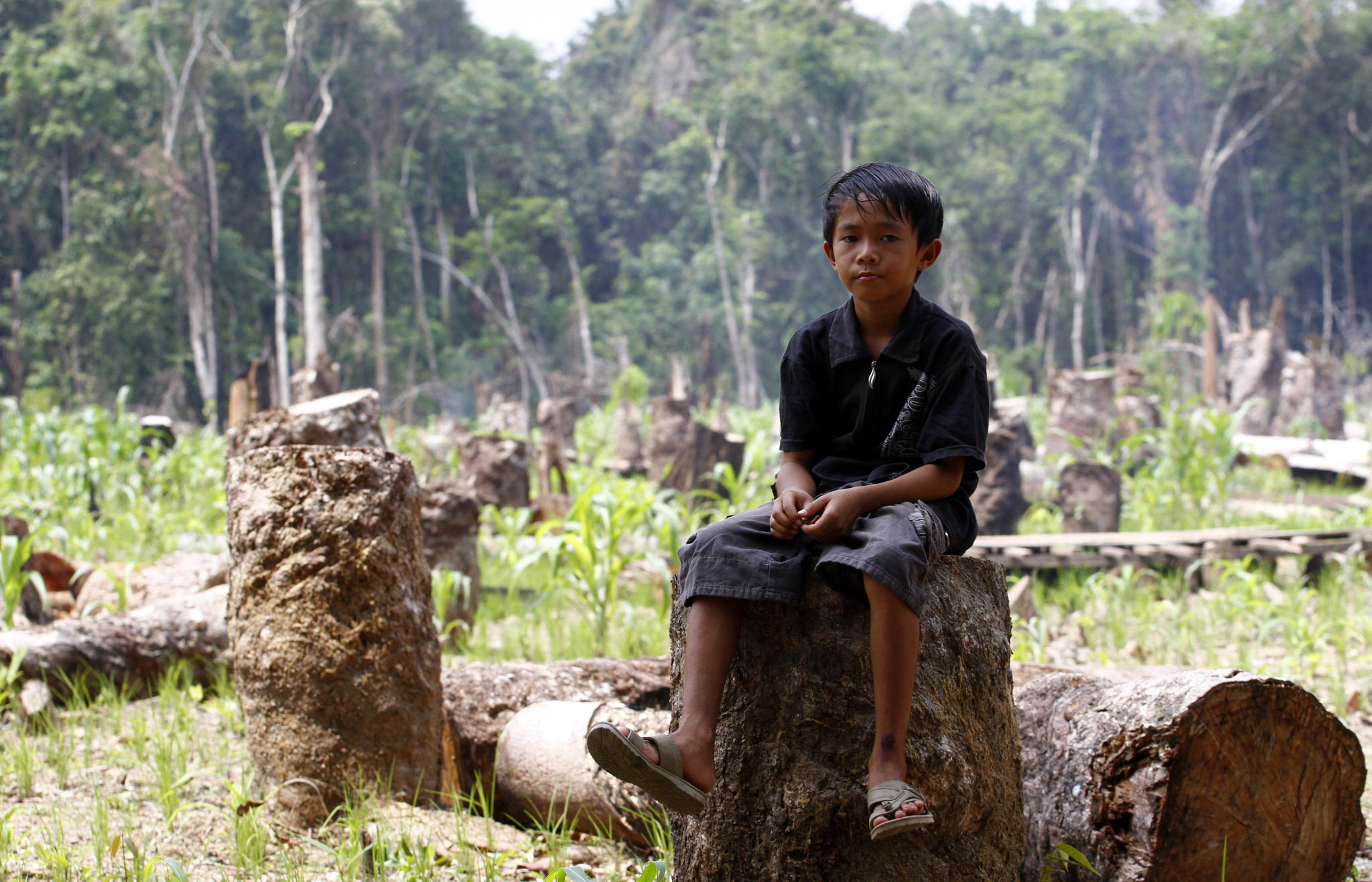
Democratization across much of Africa in the early 1990s not only affected political institutions, but also had repercussions for natural resource governance. Participatory management has since become the standard for measuring a state’s progress toward sustainable natural resource management (and in particular, forest management), due to its inclusive nature and its status as the preferred approach for non-governmental organizations and the international donor community.
However, new research from CIFOR and FAO shows that participatory methods such as community forestry have received mixed reviews — and mixed success — in Central Africa. Forest management agents in the region are ambivalent about the effectiveness of the participatory method. Some feel that participatory management has the potential to contribute to sustainable forestry management in Central Africa, to create jobs in rural areas and to fight against poverty. Others feel that participatory management is too complex and ill-adapted to the residential populations’ modes of action and traditions.
In a new book, titled ‘Inclusive management of the Congo Basin forests: From participation to power-sharing’, 30 experts explore the literature and present their personal experiences in community forestry in Central Africa (available only in French).
In one example, research conducted in Cameroon shows how community forestry is still far from reaching its targets despite the various types of support that the country has received from technical and financial partners. Factors found to prevent optimal results from community forestry operations include: unadapted regulations, complex administrative procedures for acquiring forest land and high exploitation costs.
A model for the future?
In community forestry, participatory management seeks to give village populations access to a forestry sector that has long been monopolized by multinationals, and in doing so restore equitable access to revenue. This model, called the ‘community forestry model’, in theory is meant to compensate for the shortcomings of industrial logging concessions with regard to participation and poverty eradication in rural areas, although there have been improvements in the development of communities neighboring forest concessions that are certified by the Forest Stewardship Council (FSC).
In its present form, the ‘Cameroon model’ of community forestry, which is being adopted in Democratic Republic of Congo, is not a profitable model for the local population and has become an avenue for fraudulent timber exploitation. Furthermore, the initial concept has been reoriented to ensure that it benefits the political and the administrative elite, who often pay the operating costs.
In terms of income or environment, it would appear that local populations are not benefiting much from community forestry operations.
Although communal forestry is still in its infancy with very little control over its potential, it is emerging as a model for the future in Central Africa, as part of a global development for rural entities and for sustainable forestry management, which is attracting the attention of technical and financial partners.
Says Raphaël Tsanga, one of the book’s authors: “Communal forestry in Central Africa is an opportunity for forestry management that reconciles the development needs of local communities and the objective of sustainability of resources.”
In the Central African context, decentralization of forestry management entails: (i) involving local participants in the equitable redistribution of forest-generated revenue; (ii) involving local and indigenous populations in the management of industrial concessions, and, (iii) transferring responsibility for the management of certain forestlands to local communities and decentralized entities.
On this subject, Tsanga says: “The notion of communal forestry is appealing, not only because of the related opportunities for local development, but even more so because the international economic setting and the sub-regional dynamics are amenable to global discourse on climate change and the potential role that the sub-state public entities can play in the implementation of processes such as REDD+.”
Toward local forestry
The main challenge that communal forestry in Central Africa will have to face is the matter of legitimacy. There seems to be a clash between two incompatible approaches to the meaning of decentralized forestry management, namely a ‘community-based’ definition stemming from the local community, countered by a ‘state-based’ concept that is founded on decentralized territorial units.
The first option favors social forestry rooted in local mores, but without any major impact on the standard of living, or on the state of natural resources. Its financial added value is not clear. On the other hand, this scenario has strong political and symbolic value, since it formally recognizes the role of the community in the use and planned development of rural spaces.
In the second approach, rural zone development is part of a formal decentralization process that institutes a legal entity that is expected to stand for and implement the collective interest. Here, community forestry is seen as a link in this process, even if it means relegating local customary rules and institutions to second place.
Communal forestry has long been the ‘poor cousin’ of inclusive management in Central Africa, except in Cameroon. In other countries in the region, it is limited to being mentioned in legal and regulatory texts but is not implemented (Congo, CAR, Chad) or is expressed in a legal framework that is ill-adapted (Rwanda, Burundi) or inconsistent (DRC).
There are several factors that explain the limited effectiveness of communal forestry: (i) reforms to the forestry sector in Central Africa in the mid-1990s favored industrial concessions and community forests, (ii) the development of communal forests was never a fundamental challenge or stake for Central African states or for technical and financial partners, and, (iii) in countries like Cameroon where decisive experiments have been carried out, the relatively high cost of the forest acquisition process has prevented many decentralized territorial units from adopting this management system independently.
At the end of the day, communal forestry operations are carried out at different speeds, using different methods from country to country.
We want you to share Forests News content, which is licensed under Creative Commons Attribution-NonCommercial-ShareAlike 4.0 International (CC BY-NC-SA 4.0). This means you are free to redistribute our material for non-commercial purposes. All we ask is that you give Forests News appropriate credit and link to the original Forests News content, indicate if changes were made, and distribute your contributions under the same Creative Commons license. You must notify Forests News if you repost, reprint or reuse our materials by contacting forestsnews@cifor-icraf.org.

